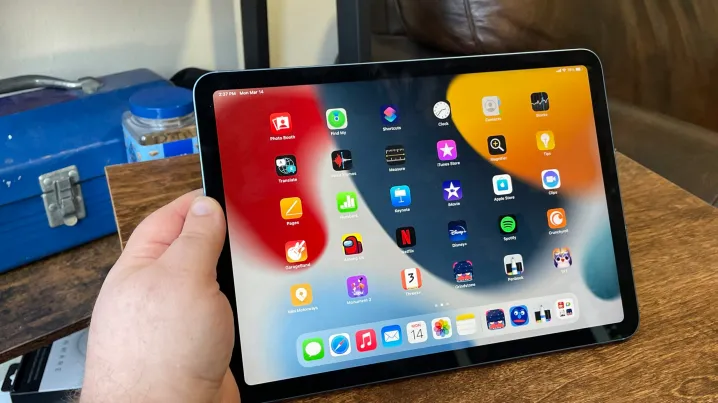Apple has finally released new iPads this year after more than a year without any updates. The iPad Air received a significant refresh, now equipped with an M2 chip and available in a new 13-inch size, in addition to the regular 11-inch size. The new 11-inch iPad Air starts at $599 for the Wi-Fi base model, while the 13-inch model starts at $799. Despite the impressive features of the new iPad Air, it’s not the only tablet option on the market. Here are five alternatives you can consider.
The new iPad Pro (2024) is another recent release from Apple, offering significant upgrades over the iPad Air. The iPad Pro also comes in 11-inch and 13-inch sizes, but it features a new OLED display, providing deeper blacks, brighter colors, and a sharper overall display. The 1TB and 2TB models also offer a nano-texture finish, which is an antireflective coating that helps reduce glare, although it may slightly affect the depth of blacks compared to the standard glossy display.
The iPad Pro (2024) is the debut device for the powerful M4 chip, which boasts the same performance level as the M2 but with better thermals and using only half the power. According to Apple, it matches the performance of a thin-and-light PC at a quarter of the power consumption. The M4 chip also provides a solid foundation for powerful AI tasks, thanks to its new Neural Engine, potentially enabling significant AI upgrades and features in iPadOS 18. Though the iPad Pro (2024) is more expensive than the new iPad Air, it is the most capable iPad available in 2024.

For those who still want an iPad Air but don’t need the new model’s latest features, the iPad Air (2022) remains a viable option. This model, equipped with the M1 chip, offers a fast and powerful performance despite being a few years old. While the M2 provides a 50% performance boost over the M1, the M1 chip is still more than adequate for most users’ needs, such as checking email, browsing social networks, consuming media, and playing games.
The iPad Air (2022) is available only in one size but features a beautiful and crisp display. It has a 12MP rear camera and a front-facing 12MP camera positioned at the top of the device in portrait orientation. It also supports USB-C charging, the Apple Pencil 2, and the Magic Keyboard, making it suitable for serious work. The base model’s 64GB storage might be limiting, so opting for a larger storage option is advisable. Despite being an older model, the iPad Air (2022) is a capable machine that can save you money if you don’t need the latest M2 chip or a 13-inch screen.
The 10th-generation iPad, released in 2022, initially faced a challenging market position due to the continued availability of the cheaper ninth-generation iPad. However, with the ninth-generation iPad no longer sold by Apple, the 10th-gen iPad, now priced at $350, is easier to recommend. It features Touch ID in the power button at the top of the frame, a front-facing camera in landscape orientation, and USB-C charging, aligning with the rest of Apple’s product lineup.
Without the home button, the 10th-gen iPad has a larger display with thinner bezels, making it ideal for media consumption. Though it uses an LED panel instead of OLED, it’s adequate for most users. The iPad is powered by the A14 Bionic chip, which, while not the newest, handles media consumption, social networking, and gaming effectively. It supports the first-gen Apple Pencil and the Apple Pencil USB-C but not the Magic Keyboard. Instead, it works with the Magic Keyboard Folio, which provides a versatile setup for productivity. With its recent price drop, the iPad (2022) is a solid alternative to the new iPad Air.
For those open to switching to Android, the OnePlus Pad is an excellent tablet option. Its design stands out with a unique Halo Green color, brushed metal look, and circular pattern on the back. The OnePlus Pad runs OxygenOS 13 and promises three years of Android OS upgrades and four years of security patches, ensuring it remains up-to-date with the latest software. It offers impressive multitasking capabilities, especially when paired with the OnePlus Magnetic Keyboard and OnePlus Stylo.

The OnePlus Pad features 8GB of RAM and the high-end MediaTek Dimensity 9000 chipset, capable of running up to 24 live apps simultaneously. It also boasts exceptional battery life, with a 9,510mAh battery lasting over 12 hours of continuous video watching and up to a month on standby. With 67W wired charging, it can go from zero to 100% in about 80 minutes. The OnePlus Pad is a compelling choice for those seeking a high-performance Android tablet.
Another Android option is the Samsung Galaxy Tab S9 FE Plus, a viable alternative for those considering the 13-inch iPad Air. The Galaxy Tab S9 FE Plus features a 12.4-inch WQXGA display with rich colors and sharp resolution, and a 90Hz refresh rate, offering smoother scrolling compared to the 60Hz screen on the iPad Air. Though it uses an Exynos 1380 chipset instead of a Snapdragon chip, it delivers good midrange performance with up to 12GB RAM.
Shipped with Android 13 and Samsung One UI 5.1.1, and now updated to Android 14, the Galaxy Tab S9 FE Plus supports Samsung DeX, which provides a desktop-like interface, making it easier to be productive on your tablet. However, the compatibility of your apps with DeX will affect your experience. The battery life is impressive, with the 10,090mAh battery providing 18 to 20 hours of continuous video watching and fully charging in under 90 minutes.
Overall, the Samsung Galaxy Tab S9 FE Plus offers a great value for those seeking a larger tablet without spending too much. It’s a strong contender against the new iPad Air, especially for users who prefer Android
If you like the article please follow on THE UBJ.
